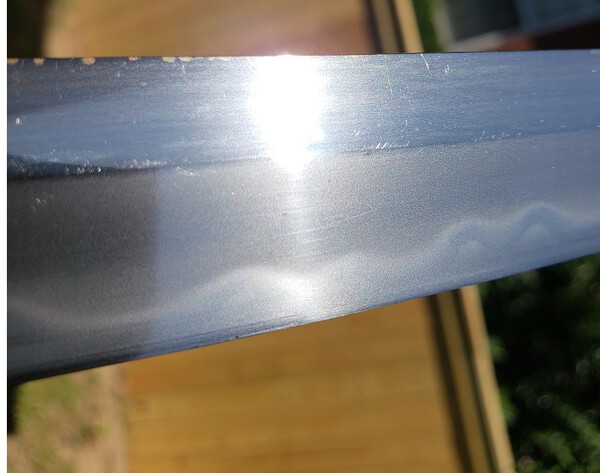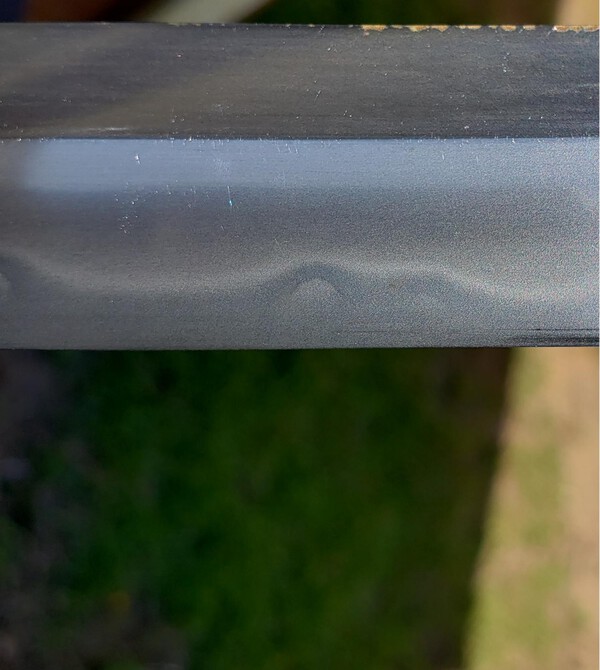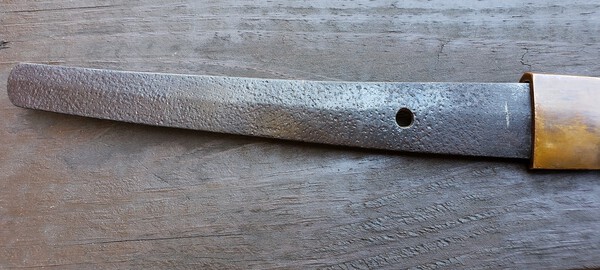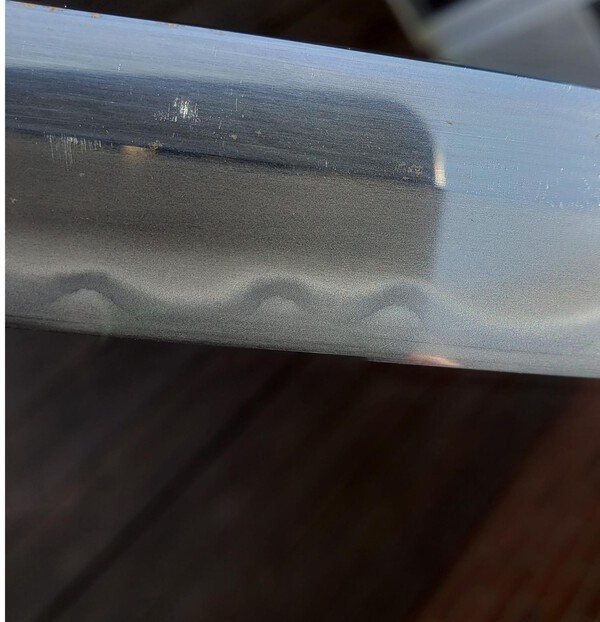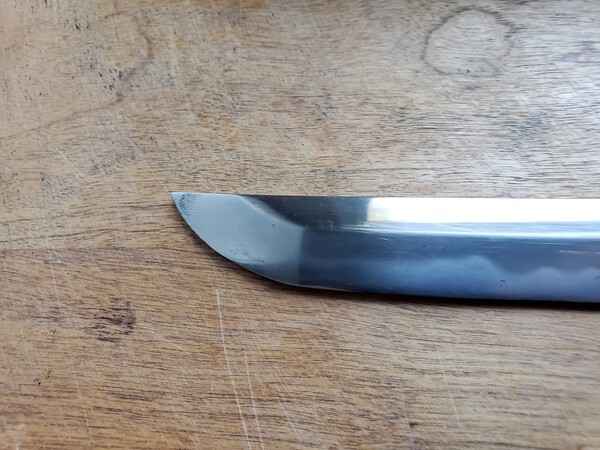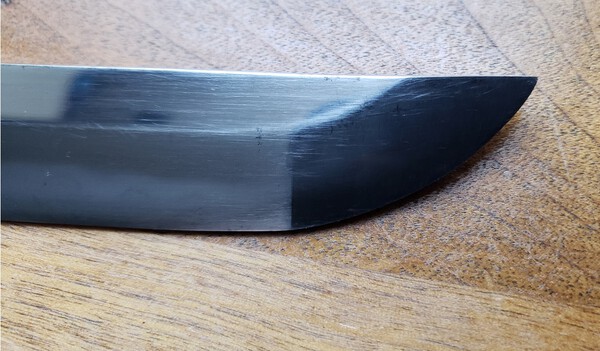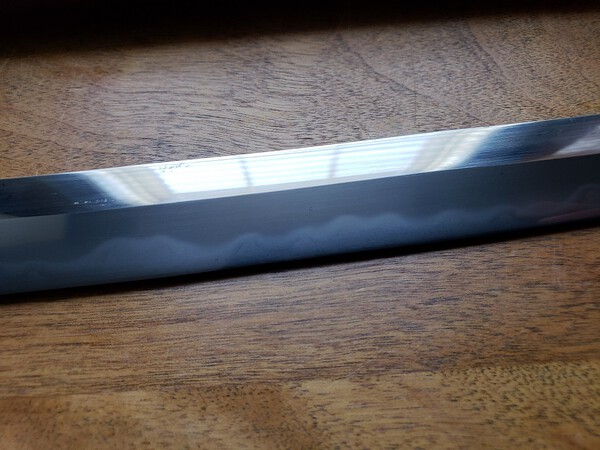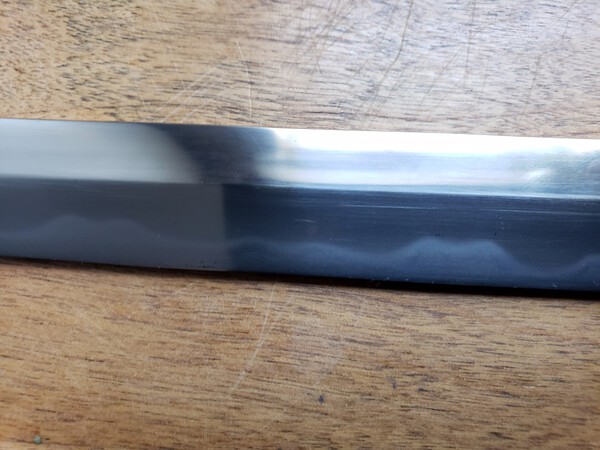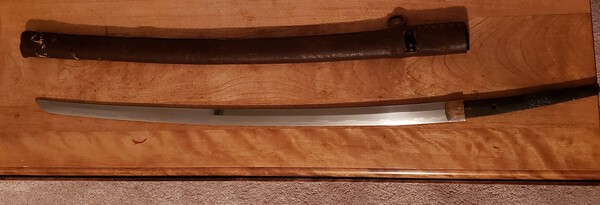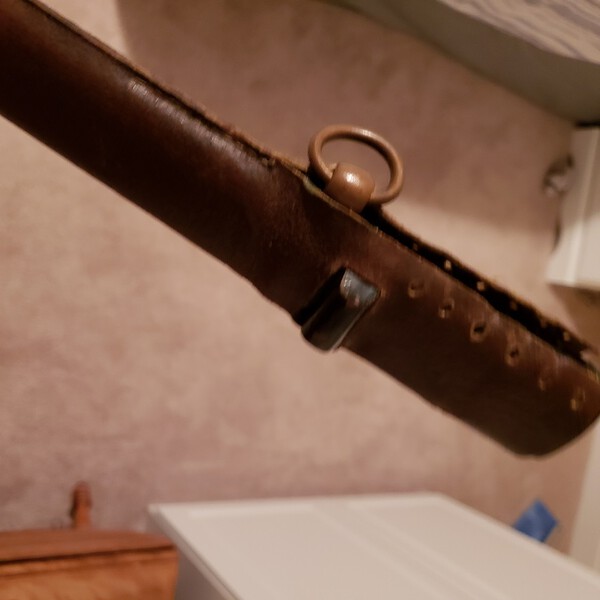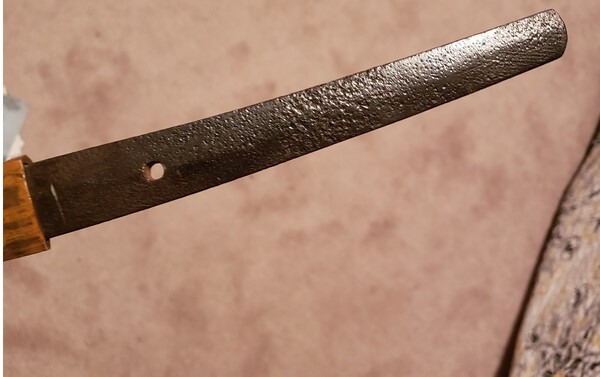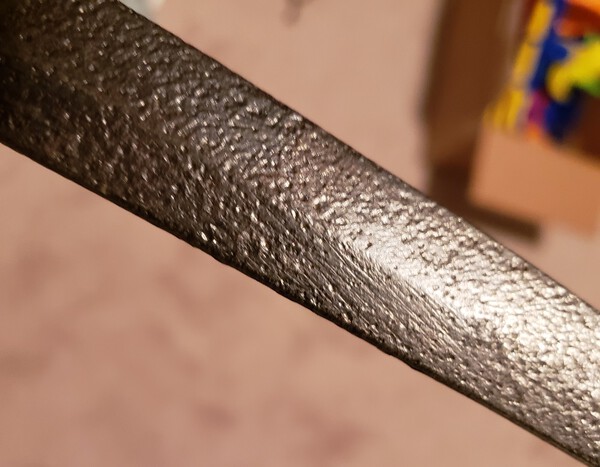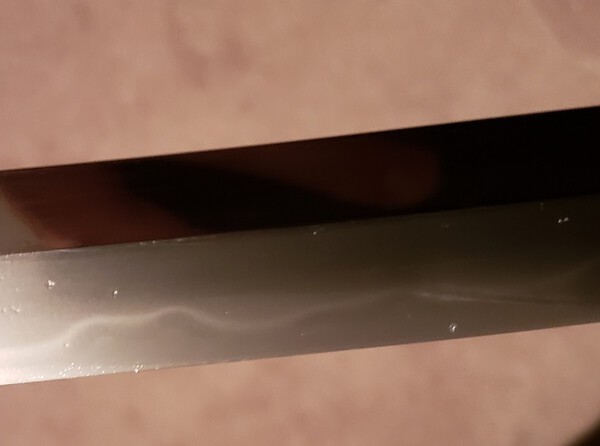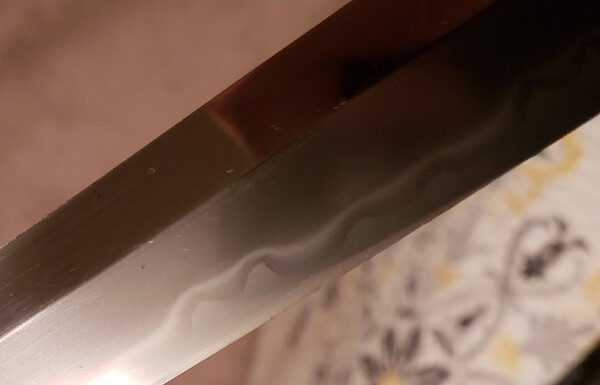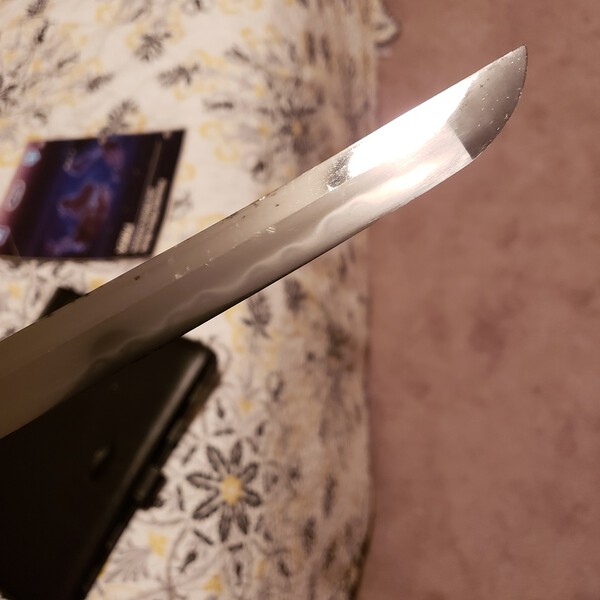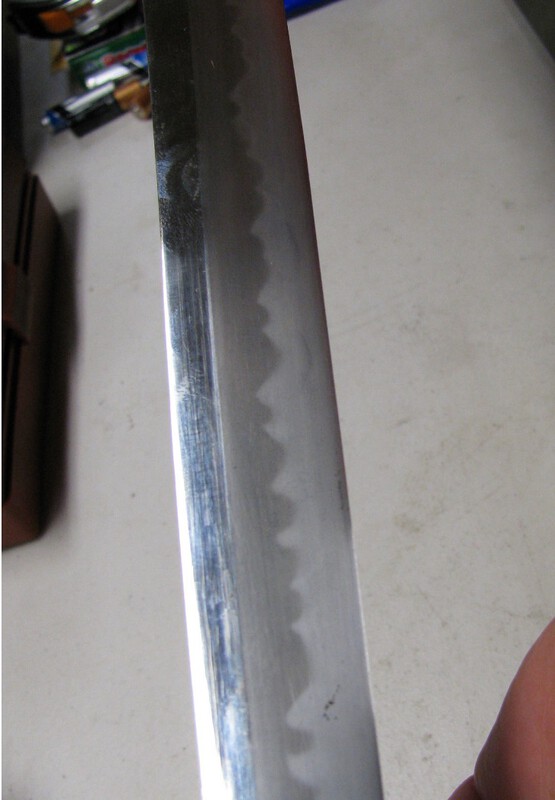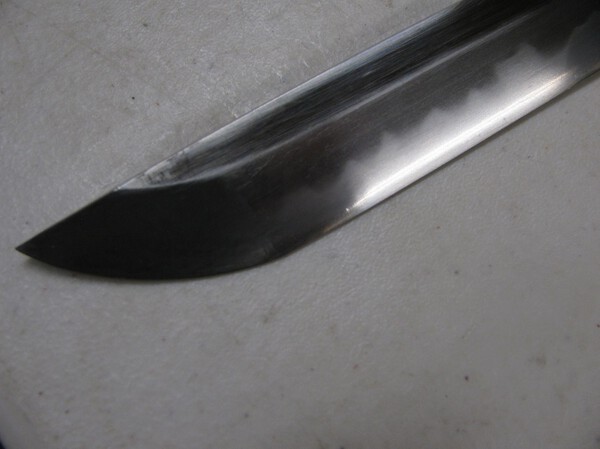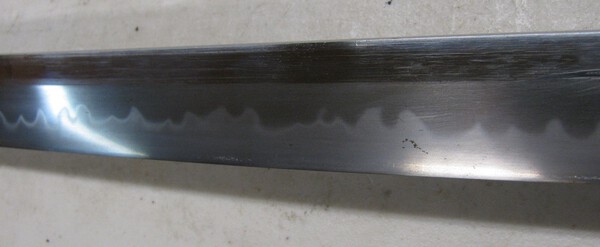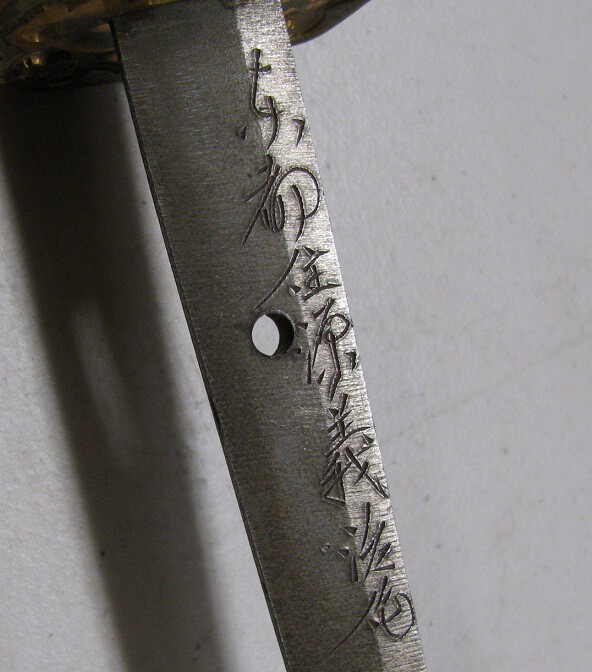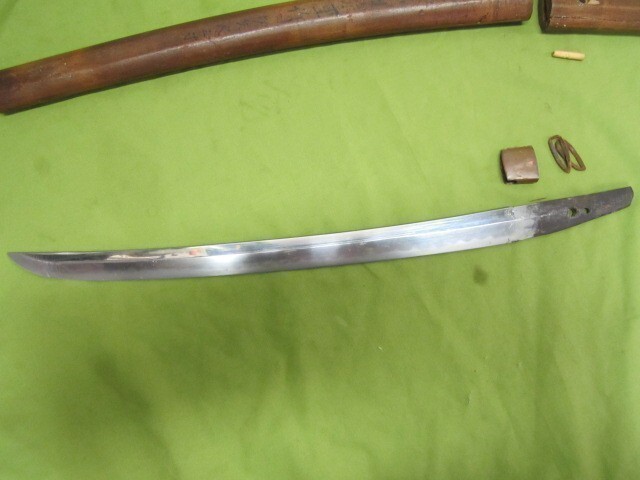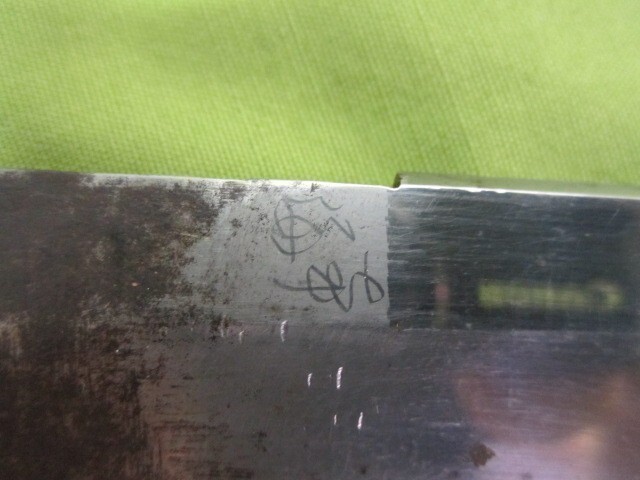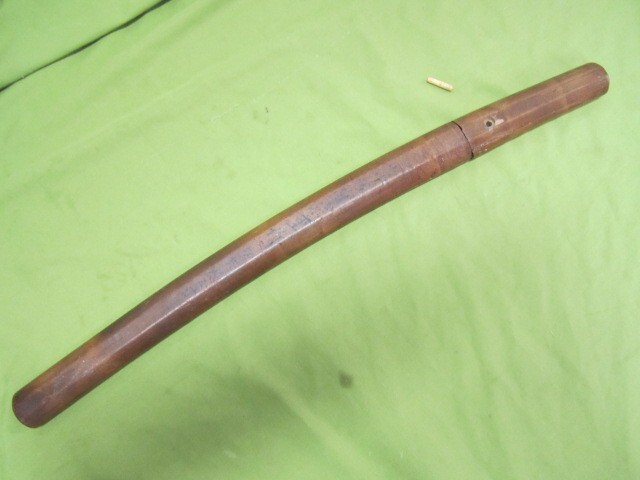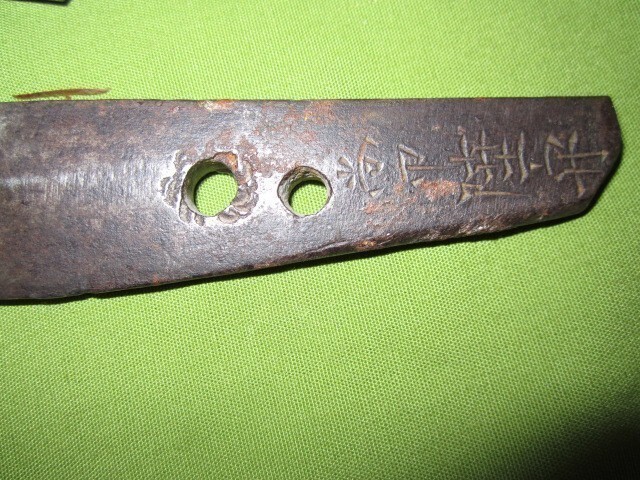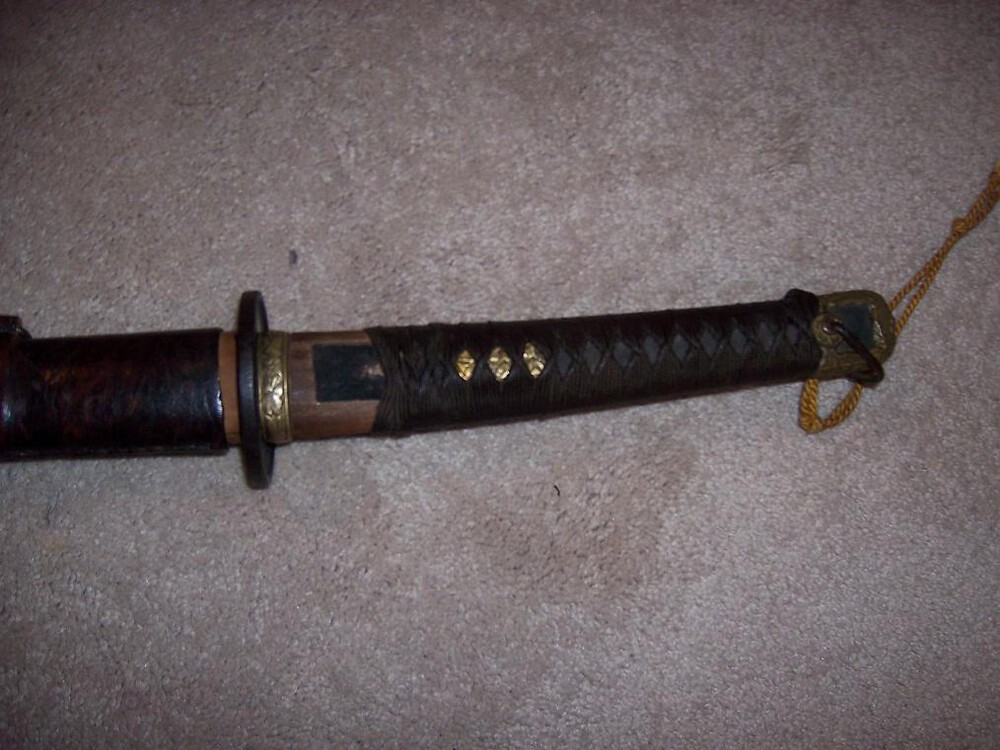
USkragnut
Members-
Posts
34 -
Joined
-
Last visited
Content Type
Profiles
Forums
Events
Store
Downloads
Gallery
Everything posted by USkragnut
-
I cannot as the owner has graciously agreed to take it back and it is gone. The mune was a fairly shallow peak though, I believe it was fairly continuous out to the kiseki. Except for the noted problems with the nakago, the form of the blade was fairly decent. Never crossed my mind it might be a fake, only that it might be Showato.
-
Interesting how good a fake this one was. Most of the Chinese forgeries are pretty laughable and easily spotted even by a relative novice like myself. This sword was much harder to spot for me but I had a hunch so I posted it here. At the very least I thought it was a rusted and re-polished showato, which I also have an interest in as they are military collectibles and still have an air of the Japanese fighting spirit. They even went so far as to make it exactly 26.5 inches from the kiseki to the habaki notch. The lack of visible hada combined with the bright and unusual hamon should have been am obvious clue...the oil quenched blades of most showato are not nearly as bright. Even my Nagamitsu in fairly nice polish is not this bright.
-
A few more final pics with a small amount of choji on the blade after I re oiled it last night. Viewed head on and at a casual glance, the hamon is quite brite but seems somewhat homogeneous in pattern (first photo). Tilted at various angles, you get other things appearing. It almost makes me think the unusual activity in the hamon is a sign that this was at one time a larger blade that was polished down as the result of fire or water damage. A wet tsuka would help explain the extensive damage to the nakago (new picture included). Or perhaps wishful thinking? In any case the spots of tarnish on the blade are present sporadically on the left side primarily along the mune.
-
Its definitely a hand polished blade with a differentially hardened edge, the shape from the shinogi down to the ha is nicely convex (my favorite shape rather than a flatter profile). The clarity of the hamon makes me pretty sure its at least water and not oil quenched, however I have owned WWII military gunto swords that were also water quenched and still had a Seki stamp. Well, wiping the oil off the blade with a soft cloth didnt help my photography as it reveals a lot of the fine scratches in the blade from the saya. Boshi is ko maru but its hard for me to photograph. My hope was that this was a Shinshinto or at least an early Gendai blade that an Army swordsmith polished down to a rather standard shape and size before returning to its owner. If its simply a machine made gunto being passed off as a fake then a previous owner went to a lot of trouble to corrode the nakago to this level of damage. As I noted previously, the damage appears to be of different eras, but thats just my opinion. Upon reflection I agree that the nakago has been wire brushed, and by a previous owner, not the swordsmith as I realize such a practice is frowned upon. Although I am just an apprentice around here, my background in antique and collectible firearms has allowed me to help many others identify fake vintage Colts etc and given me a wide familiarity with fakers and their techniques. Obviously here my Spidey-Sense is scrambled. As always I really appreciate and enjoy the feedback from more experienced members here. My grandfather (a man far wiser than me) taught me that cruel honesty is better than compassionate falsehood :-) Regards Sean T.
-
I recently acquired this and am hoping its an ancestral blade. The saya is a standard late war type, black lacquered wood with leather wrap. The tsuka and the rest of the koshirae are long lost. Not sure if the blade was originally carried in this or the two were simply combined by its post WWII owners, however the blade does seem to fit the saya well. Length is a rather typical 26.5 inches from the kisecki to the back of the hibacki notch of the blade. I do not know if this was the blades original length or it was brought to this by its last polisher. Its in very nice shape with what I believe to be its original WWII polish with only some fine scuffs from the saya and a couple small spots of tarnish. There are no flaws in the blade and no nicks in the edge. The hada is not really discernable. THis had me concerned that perhaps this was just a water quenched machine made blade however the hamon and nakago make me believe otherwise. The hamon has two distinct and easily seen (though not so easily photographed pacing around my bonus room late at night) shadows of crystalline structure to it. They are very consistent in width and clarity along the top of the hamon. On the few spots of the nakago that dont have heavy pitting, you can see that the draw file marks have been almost completely obliterated by previous periods of erosion. A few places on the left side make me think I see the remnants of a signature but its so eroded I can't tell and the blade may be mumei. I think the nakago was cleaned by its wartime polisher or owner, and possibly waxed to prevent further destruction to the metal. While I don't think it is the lost Honjo Masamune, it is very attractive and would like to believe it is a true nihonto. How would I proceed further to determine this and a possible era / value? As always, much thanks to all the members here more knowledgeable than I. Regards Sean T.
-
Thanks so much. No tang stamps, just a signature....not a guarantee of traditional forged blade, correct? Hamon is fairly straight and unremarkable, but appears to have a definite hada. Hard to photograph. Opinions? Sean T.
-
As usual, the vast knowledge of the members here is much appreciated. WWII sword in Army mounts. Seems fairly modern. Any way to tell the era as Meiji, Taisho, or Showa? Much thanks again! Regards Sean T.
-
Interesting...whats the significance of the 2428? Regards Sean T.
-
Done..konnichi wa! Although it is a nice looking blade, its not mine. I will see what I can get from the owner on more pictures. Regards Sean T.
-
This is my go to place for folks far more worldly and knowledgeable than I. All of your help is greatly appreciated, as always!
-
No, its just tarnish / oxidation. No stamps but their is a polishers mark under the hibachi. Parallel lines, not a signature. Regards, Sean
-
A few pics of the blade. Forging grain is very tight and I just am not good at photgraphing art swords yet. Rather short blade, only 64cm.
-
If I read this right, the name is Masa shige, an early shinshinto smith? opinions on the age of the nakago as it pertains to the signature....perhaps a gimei blade? Regards Sean
-
I did not know the Japanese followed same cycle as China and other mainland Asian countries. As I said, forgive my ignorance. This site is an education...thanks again! Cheers.
-
Thanks John. Does it actually say Showa year 56? Regards Sean
-
Forgive my ignorance if I am using the wrong term. The owner thinks this blade is Edo period, but I think it is a post WWII Gendai blade or a fake. I think the date is Showa but my Japanese is limited to looking up characters on the web. If I read it right, smiths name is MORI MITSU. The hada aqnd hamon look pretty good but I am not so sure....what do you gentlemen think? Regards Sean
-
I'm not the best shutterbug in the world, and the polish isnt that great. Shinogi Ji has a lot of scratches and my eyes arent what they used to be. Where do you look for signs of lamination? Or do you? Regards Sean
-
Photography is not the best, and it does have some scratches from dirt in the saya or a careless owner. Sean
-
No date. Any way to tell if it is not traditionally forged? Mounts are usual WWII brass tsuba and leather wrapped saya. Regards Sean
-
No stamps, and the hamon is quite lively and not the boring type usually seen on the oil quenched blades, so I assume it is gendaito?
-
Unidentified wakizashi in shirasaya
USkragnut replied to USkragnut's topic in Translation Assistance
-
Unidentified wakizashi in shirasaya
USkragnut replied to USkragnut's topic in Translation Assistance
Thank you...what does that mean? It was made from a broken katana? Would that be the smiths title or the owners? What period roughly? -
-


